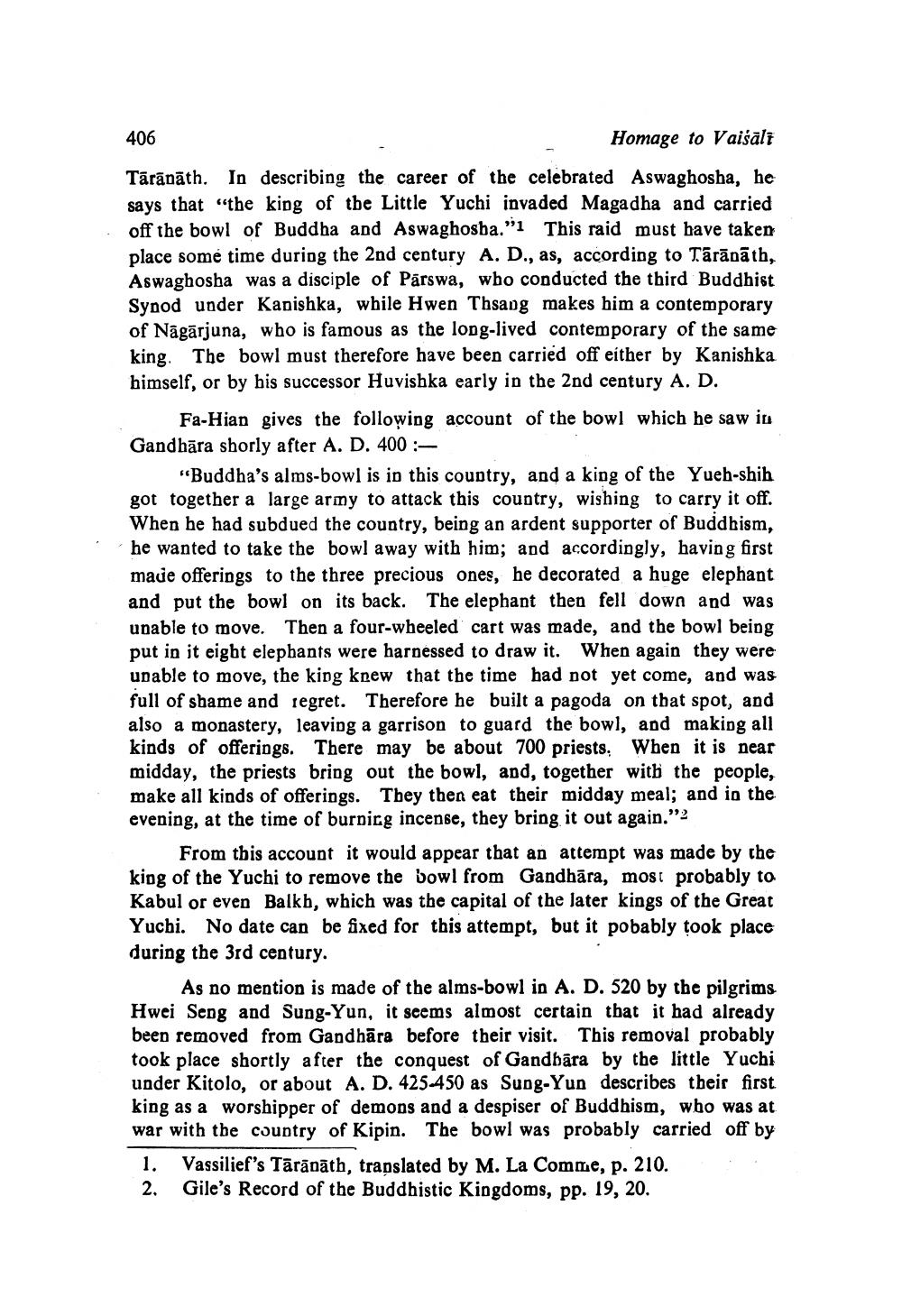________________ 406 Homage to Vaisalt Tarapath. In describing the career of the celebrated Aswaghosha, he says that the king of the Little Yuchi invaded Magadha and carried off the bowl of Buddha and Aswaghosba."1 This raid must have taken place some time during the 2nd century A. D., as, according to Taranath, Aswaghosha was a disciple of Parswa, who conducted the third Buddhist Synod under Kanishka, wbile Hwen Thsang makes him a contemporary of Nagarjuna, who is famous as the long-lived contemporary of the same king. The bowl must therefore have been carried off either by Kanishka himself, or by his successor Huvishka early in the 2nd century A. D. Fa-Hian gives the following account of the bowl which he saw in Gandhara shorly after A. D. 400: "Buddha's alms-bowl is in this country, and a king of the Yueb-shih got together a large army to attack this country, wishing to carry it off. When he had subdued the country, being an ardent supporter of Buddhism, he wanted to take the bowl away with him; and accordingly, having first made offerings to the three precious ones, he decorated a huge elephant and put the bowl on its back. The elephant then fell down and was unable to move. Then a four-wheeled cart was made, and the bowl being put in it eight elephants were harnessed to draw it. When again they were unable to move, the king knew that the time had not yet come, and was full of shame and regret. Therefore he built a pagoda on that spot, and also a monastery, leaving a garrison to guard the bowl, and making all kinds of offerings. There may be about 700 priests. When it is near midday, the priests bring out the bowl, and, together with the people, make all kinds of offerings. They then eat their midday meal; and in the evening, at the time of burnicg incense, they bring it out again."? From this account it would appear that an attempt was made by the king of the Yuchi to remove the bowl from Gandhara, most probably to Kabul or even Balkh, which was the capital of the later kings of the Great Yucbi. No date can be fixed for this attempt, but it pobably took place during the 3rd century. As no mention is made of the alms-bowl in A. D. 520 by the pilgrims Hwei Seng and Sung-Yun, it seems almost certain that it had already been removed from Gandhara before their visit. This removal probably took place shortly after the conquest of Gandbara by the little Yuchi under Kitolo, or about A. D. 425-450 as Sung-Yun describes their first king as a worshipper of demons and a despiser of Buddhism, who was at war with the country of Kipin. The bowl was probably carried off by 1. Vassilief's Taranath, trapslated by M. La Comme, p. 210. 2. Gile's Record of the Buddhistic Kingdoms, pp. 19, 20.




